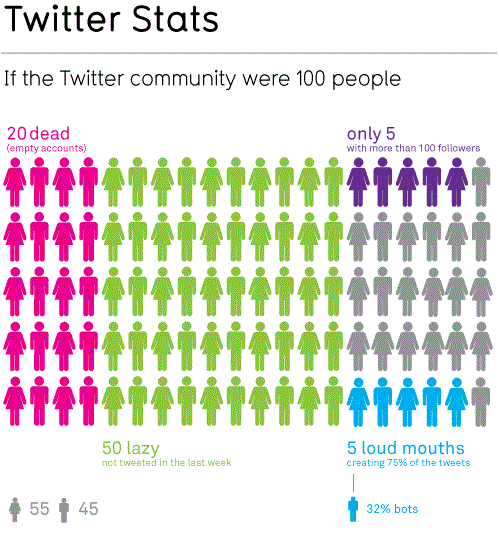Traffic for Free: 4 Quick Tips for Reviving Old Blog Posts
If you are a frequent blogger, then chances are some of your most valuable content has been buried within your archives for months or even years.
There are topics in every industry that will forever remain of interest to audiences. If you have already written about them then you shouldn’t be wary of revisiting them again. In fact, you can easily do so by producing new and revived content.
When attempting to do this, bloggers will often just copy and paste their old blog posts into new ones. However, this can cause problems with duplicate content and doesn’t really offer readers anything new or enticing.
[Tweet “There are much better ways to breathe life into old content than duplicating posts”]
There are much better ways to breathe life into old content. With that said, in this article I will cover four quick and easy ways that you can revive old blog posts while still offering your audience valuable content.
1. Identify Your Best Performing Blog Posts
As a busy marketer, you don’t want to spend your precious time and resources focusing on just any blog post. Especially when some are better left in the archives (ouch).
So before you start to get creative with revival tactics, it is important to do a little groundwork by conducting a blog audit to determine exactly which blog posts are worth bringing back to life.
Start by examining your website analytics to identify the blog posts that have generated notable spikes in traffic when they were first released, as well as those that have continued to over-perform since their initial release.
Once these posts have been identified, you can delve a little deeper into why this content was so successful. Ask yourself the following questions while reading through the posts:
- Is the title particularly attention-grabbing or provocative?
- Do I reference any specific events, research or brands?
- Is the writing style and tone of voice different to my other posts?
- Have I used any rich media?
- Where was the blog promoted and was it picked up by any influencers?
- Are there many comments or social shares?
- What feedback have readers given about the post?
The above questions will help you to determine what made this specific post stand out from the rest. These attributes can be emulated in your future posts to help increase their popularity.
2. Refresh the Copy
When reviving old blog posts, your main goal is likely to be increased traffic generation. However, this doesn’t mean that you should look at refreshing your blog post content from a strictly SEO-only perspective.
Instead, you need to ensure that the content and information contained within your posts is updated and made more engaging for your audience. This in turn will make your refreshed posts far more attractive to Google than spinning any SEO wizardry would.
Read your blog post with fresh eyes and with the following questions in mind.
- Does the copy reflect my current messaging and branding?
- Is the copy aimed at my current target audience?
- Am I featuring my latest products and services?
- Do any time-sensitive events need to be removed or replaced?
- Are any statistics or research references now outdated?
The above are examples of areas within business that are constantly evolving. This means that any blog posts that were written years (or even months) ago are likely to become outdated quickly and will need to be updated to reflect your current brand.
3. Expand the Topic
If a specific blog post has performed particularly well, then it’s likely to be based on a topic that your audience want to hear about. Therefore, try to offer them even more relevant content by revisiting and expanding on the topic.
There are lots of opportunities to get creative and generate more content around a specific topic. Below are some strategies that you can utilize.
Follow-up Posts
An easy and immediate way to repurpose a popular topic is to create a follow-up blog post. This could mean naturally progressing the topic. For example, if you wrote a blog post titled “SEO for Beginners”, you could follow it up with “SEO for Advanced Marketers”.
Alternatively, you can approach the topic from a different angle while still covering fairly similar content. Using our SEO example, you could produce a post on “5 SEO Mistakes Beginner Marketers Make”.
If you really want to delve into the topic then why not split the post up even further. Continuing with our SEO example, if you focused on keywords, content and links then you could produce a more in-depth post on each of these areas.
Guides
If you have multiple blog posts on a similar topic, guides allow you to combine all of this information into a central piece of content that users can easily consume.
Guides also offer increased creative opportunities, so experiment with the design to make it as eye catching and enticing as possible. You could even include visual examples, diagrams and actionable worksheets.
It is likely that your audience are used to submitting basic demographic details in return for a guide download, so make sure you use this to your advantage to build your database and email list.

Just like we do!
Checklists and Worksheets
If you’re more concerned with simplifying your blog post than delving deeper into it, a checklist or worksheet is a perfect way to turn information into a usable and more tangible format.
By offering your audience a piece of content that they can actively use, they are more likely to action your advice and improve their results. This increases the perceived value of your content, which of course reflects well on your brand.
4. Offer Something Visual
Increasing the visual nature of your content is an ideal way to breathe new life into old words. It is also great for engaging with with those in your audience who are visual learners.
One of the hardest parts of producing visual content is coming up with the background information and script. Luckily, you’ve done a lot of the hard work with your blog post, so you can jump straight into the following ideas.
Videos
Video is traditionally linked to high budgets, but in recent years this certainly hasn’t been the case. In fact, many brands have great success filming videos on their phones and uploading them to video sharing sites such as Vine.
You could either use the information within your blog post and simply present it via an informative video, or be a little more creative and explain the information using a visual story or short film.

Gap regularly use simple and fun Vine videos to promote their latest products.
If you’re still not convinced on the worth of video marketing then be sure to read this insightful post from Bidsketch.
Webinars
If you are considering presenting your information but aren’t comfortable in front of a camera, a webinar could the perfect option for you. Furthermore, webinars are a great way to share knowledge and engage viewers with both an aural presentation and visual slides.
Webinars are often used for data capture purposes too, so ask your audience to register to attend and then capture their name and email address for future marketing communications.
If you’ve not hosted a webinar before then check out this great how-to post from Convince and Convert.
Infographics
If you have the design resources available, infographics are ideal for reviving content – especially if your blog is based around statistics and/or short snippets of information.
The aim of an infographic is to offer a visual representation of information.

David McCandless famously uses bold imagery to display complicated information in an easily-consumable way.
As in the example above, make sure that you keep copy to a minimum and focus on images and numbers instead. Image-heavy content is particularly popular on social networks, so infographics are likely to increase your social exposure too.
Conclusion
Continually producing useful and engaging content can be an exhausting process.
By including the above tips in your strategy, you will be able to produce more of the content that your audience wants to see without dramatically adding to your workload.
Additionally, you can ensure that all of the content you produce moving forwards is created with revival and repurposing in mind, saving you even more time and resources in the long run.
Have you revived any old blog posts and if so, in what format? Let us know in the comments!





